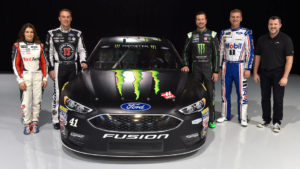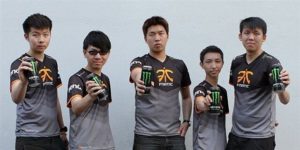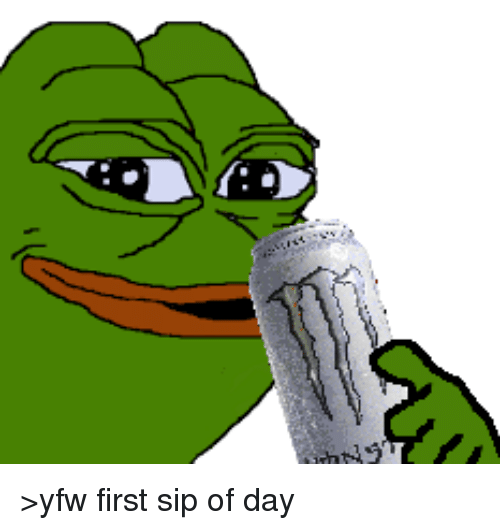How Monster Beverage Hijacked the Internet Meme Culture
Compared to soft drinks, the energy drink segment must still seem like frontier territory. Sales are generally increasing while soft drink brands are facing steady declines. The market leader, of course, is Red Bull. Monster is a worthy number two with its distinct image of being aggressive, in-your-face and, well, monster-sized. While Red Bull has successfully earned a place in popular culture with its spectacular sponsored stunts and insertion into the mainstream drinking culture, Monster has always dared to be different. As it should be; a me-too number two brand gets overtaken easily.
One look at the energy drink shelf and you’ll get a good idea of how Monster sees itself relative to Red Bull—the sheer bulk and visual loudness of its cans demand your attention away from the slimmer and more understated Red Bull cans. Monster sponsors the All-American NASCAR, Red Bull prefers to make its presence known in Formula 1. While Red Bull appeals more to the urban yuppie, Monster targets the working man who’s never sat in a bar with anything more complicated than a beer.


But what’s really intriguing is how Monster does online marketing. While Red Bull goes straight for the Yahoo! Headlines, Twitter mentions, and Facebook shares with its space jump and extreme sports sponsorships, Monster has gone underground (in addition to its more “normal” marketing efforts, such as esports sponsorship). To be more precise, the almost-anything-goes depths of the Internet that is 4chan.
Monster Beverage isn’t the first commercial brand to try its hand at meme marketing in what is considered the source of most Internet memes, but they’ve certainly been the most successful. If you know about the generally antagonistic, crass, and anonymous nature of the infamous message board, you’ll understand why Monster’s success is remarkable; 4chan is simply not an environment most marketing teams or agencies are comfortable working in. It wouldn’t be too inaccurate to call 4chan an antisocial media platform.
And since 4chan is anonymous and Monster is unlikely to divulge their strategy and tactics, the following is pieced together from my personal research. That means I may make connections that don’t actually exist, or miss out on details that do. Regardless, this post should provide some useful information to organisations who want to better understand meme marketing done right.

Monster first forced itself into the popular fitness subforum of 4chan by starting threads with existing popular meme images with a can of Monster photoshopped into them. The accompanying text would simply read “first sip of the day”. The early attempts were so blatant and generally unfunny (perhaps intentionally so) that users started to meme Monster’s memes. User-created photoshopped images started to appear. Users pretended to be working for Monster and mocked those who didn’t appreciate the product. Users, in an ironic way, added the trademark symbol to every mention of Monster and its various products. In effect, Monster unintentionally (?) recruited 4chan users to talk about its brand, for free. Monster had successful infiltrated 4chan as one of its many inside jokes.
And because it was an inside joke, any mention of Monster or “sip” became an easy way for 4chan users to feel like they were making a funny post. Hence, it didn’t take long before the meme spread to the other parts of 4chan.

Some time in mid-2018, a new meme surfaced on 4chan—users started to mock other users by calling them “boomers”. Obviously, actual baby boomers likely make up a minuscule percentage of 4chan users, and they were hence using the term wrongly on purpose, e.g. calling someone a “28 year old boomer who thinks modern films are shallow”. Along the way, Monster somehow got attached to the boomer meme. Images featuring 4chan’s rendition of boomers and a can of Monster were created, further extending the lifespan of the Monster and sips meme. Another popular variation is users typing out the process of cracking open of a Monster can, taking a sip, and then reminiscing on some topic.
By the time Monster hijacked the conversation in 4chan, its memes have spread to Tumblr, Twitter, Reddit, and other more mainstream platforms. Millions upon millions of people, mostly male in the 18-34 age range (which just happens to be Monster’s main target demographic), were laughing at and sharing memes featuring the Monster brand.

It’s possible that all these happened due to sheer luck, brilliant marketing, or some combination of both. But what’s noteworthy is that this whole joke snowballed because it was so easy to retell. It didn’t take much effort for users to copy-paste a can of Monster in Photoshop, and it certainly wasn’t difficult to make a reference to “sips”.
What’s certain is that not all marketing teams or agencies can or should dive into meme marketing. It’s more unpredictable than even social media marketing—you can maximise the chances of your memes taking off, but you can never be 100% sure. It requires a willingness to relinquish control, even when your target audience is turning your memes against your brand or client. It requires a genuine understanding of the platform you’re infiltrating. But for those brands that can and dare, they may actually stand a chance of being part of a 24 year old boomer’s vocabulary.
